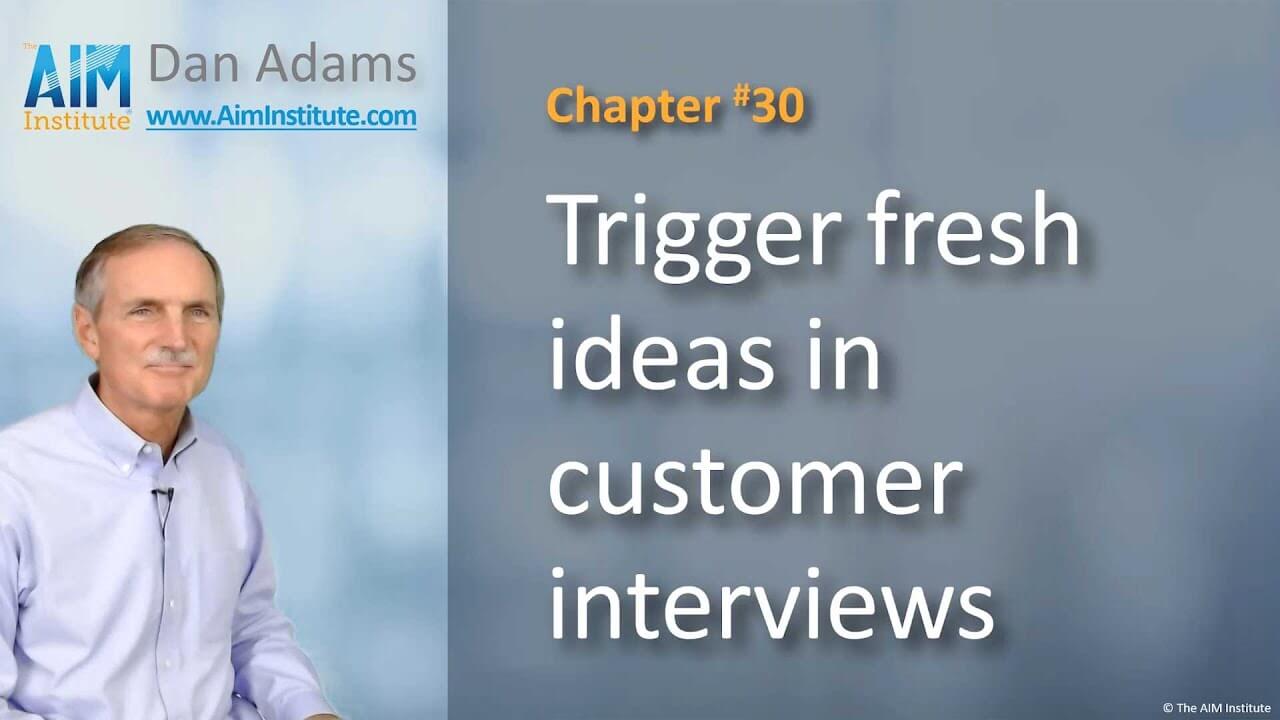B2B Organic Growth Series: Chapter #30
Trigger fresh ideas in customer interviews

Subscribe to the series. Get 50 free videos, sent daily or weekly.
If you want to unleash the full brainpower of B2B customers during a qualitative Discovery interview, introduce them to a trigger method. One such method is the Trends Map.
b2bgrowth.video/30 Video length [2:05]
Transcript of Chapter 30
What if your customers aren’t giving you very interesting ideas during your interviews? They may be locked into “paradigms” or mental models that can cause their thinking to be too similar… too predictable… and too confining… when you want their thinking to be more divergent… more unexpected… and more liberating.
So how do you suspend these paradigms during your interview? For years, experienced facilitators have used “trigger methods” in brainstorming sessions. These methods pull thinkers out of their original arena of thought into a completely new one… so they can spark new ideas in the original arena.
Trigger methods can lead to about 30% more ideas—many of which are the most exciting. So how—and when—do you help your customers get “out of the box” during interviews? Well, first you must help them empty the box.
Start by letting them tell you about the problems they’ve been putting up with. Then ask them what their ideal world would look like. Only then do you introduce trigger methods to help them generate desired outcomes they might not have otherwise thought of.
Here’s an example, something we call the “Trends Map.” You create major categories, such as environmental, economic, technology and demographic. Then within each category you list trends relevant for customers you are interviewing.
During the interview you ask if these trends help “trigger” any more desired customer outcomes. Perhaps when they see “Landfill waste reduction,” they’ll say they’d like to reduce the amount of packaging their products use.
There are other trigger maps, but they all share this in common: They get customers to think more creatively… and they are engaging. Customers appreciate suppliers that behave more like professional facilitators than sellers.
Comments